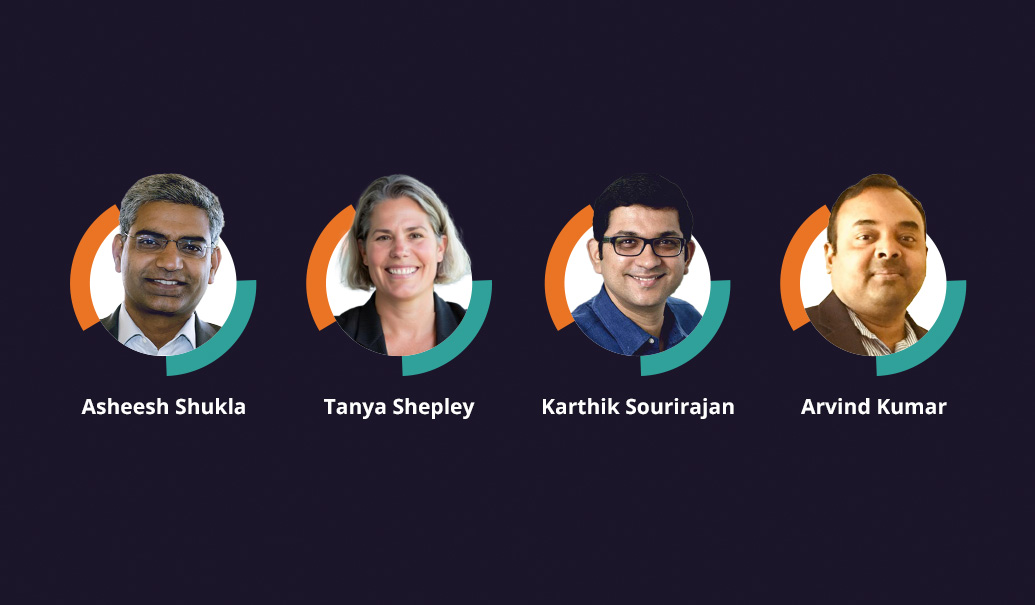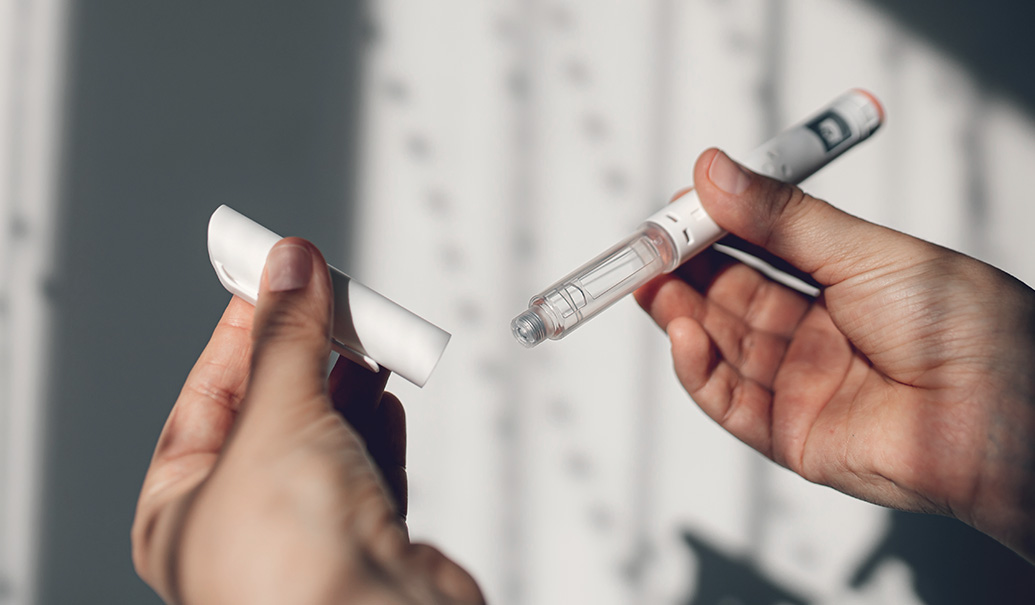The rapidly growing digital health industry presents many opportunities for life sciences firms. As pharma launches more digital solutions to differentiate and enhance therapies, traditional commercial models have been forced to evolve. Meanwhile, as health startups launch digital therapies, the traditional tech playbook doesn’t always apply either. We believe there’s an opportunity for each industry to learn from each other and architect new commercial approaches that combine best practices from both life sciences and tech industries. We sat down with Melinda Decker, formerly of AstraZeneca and currently CCO at Mymee, a digital care start-up for autoimmune diseases, and Challis Imes, Sr. Director of U.S. Connected Care Strategy at Eli Lilly, a Fortune 500 pharma company developing connected insulin solutions, to help us unpack the key challenges and success factors for commercial planning in digital health.
Daniel Blessing: Digital health is a complicated space. How are you managing that complexity as you plan to launch and grow your products?
Melinda Decker: With traditional pharma, your competition is very specific, but with digital therapeutics, your competitive set could include medical devices, pharmaceutical products, other digital health solutions, holistic and functional medicine, coaching and more. You have to be much more open-minded about what payers are doing, what consumers and physicians are looking at and what evidence and outcomes matter most. And you need to be more responsive to rapid change.
Challis Imes: For Lilly, we had 140 years’ experience with our therapeutic space, customers and the competition. Now with digital, it’s harder to get a handle on that competition aspect because it moves so quickly. So our approach is about leveraging our expertise internally, making sure we have the right people in the room, with the right expertise as we're navigating this new environment and market speed. We also recognize where we don't have that expertise and then try to figure out who to partner with to compensate.
DB: That’s a lot to track. Where do you put your focus? Or does it need to be everywhere?
CI: You focus on what you want to deliver for customers. How you get there or how you’ll react to customer or market demands is about being flexible. But you can’t ignore market influences. The problem in our space is that you still have 60% of patients with type-two diabetes on insulin who aren’t at goal. So no matter how well we've innovated around the medicine, something's not working. And so that's where we have to double down and figure out what other things about our customers we need to learn to move the needle on outcomes.
MD: With pharmaceuticals, we rarely launch anything that's not a blockbuster. But some digital products are the size of an indication. We might project $400 million in peak year sales as opposed to $10 billion. So you have to be even smarter with resources. You have to see the competitive set, figure out pricing, who needs to be influenced, how to activate patient advocates and opinion leaders, all with less.
Pete Masloski: Are there particular places where we need to think of a different model for supporting digital health? Do we need to change how we do things to improve agility?
CI: Pharma today is linear and predictable compared to digital health. We know how to get drugs to market. We know the risks and problems we’ll face. We get to launch and do a big reveal all at once. Digital health is a more iterative process. You have to get more comfortable with an MVP (minimal viable product) and putting something out there that's not optimal with the intention of learning from your customers, making adjustments, iterating and improving. And that's an ongoing process. We’ve talked a lot about how we can build a better shared consciousness across functions. You want good representation of subject matter expertise on your teams. You want to share information, share decisions and move quickly. This is a change for pharma but one that we welcome.
MD: Agreed; and some of the cycle times and processes need different models. A one-year brand planning cycle does not work for digital health. Cycle times are compressed. With digital health, radical things can happen multiple times a year. A competitor launches something that you didn't see or their clinical study results didn't turn out the way they thought, and it's much more dynamic.
CI: In tech or smaller biotech companies, they’re laser focused on a specific problem that they're trying to solve. In pharma, we sometimes feel like we can do it all, versus staying laser focused in our niche. From your experience, Melinda, what are the differences between how tech or small biopharma works versus how larger pharma companies work? Just curious what your experience is there.
MD: My experience has been that pharma tries to make the problem too big. Too often, we do these huge, enterprise initiatives that can take years rather than small experiments done in months. We also tend to think about our brand and not a broader perspective. We need to focus on the patient and how to support a particular patient throughout their journey. Their journey could include therapies other than our brand. Putting the patient first is the only way to think about what we do, and I’ve seen that transition in many pharma companies. But it's hard to switch that mindset when you’re accountable for one specific brand.
CI: Yeah, I completely agree. And I do think pharma can complicate things. With Lilly, I believe we’re keeping that customer experience at the center of everything we're doing. In fact, how we structure our teams, how we lead our teams, the mindset that we go into, it's always about trying to keep the customer at the center driving simplicity. The digital space can absolutely simplify and improve customers’ lives. But if you over engineer something, it does the exact opposite and doesn't bring simplicity to how they're managing the disease.
DB: So then what is the most important thing to get right with your customer strategy?
MD: UX and getting that customer experience feedback early are so important. It’s about innovating quickly, evolving, doing AB testing and getting lots of users to test. Maybe it means giving it away for free to many people at first. These trials are different from what pharma typically does, given that UX is more critical and you need to iterate.
CI: I couldn't agree more. It's about getting the customer experience [right] across all your customer groups. Usually in pharma, you launch and then you start to run these little pilots on where you can accelerate things. We need to be more agile, which isn’t something pharma is used to.
MD: Failure is one of the keys to learning that tech companies know, and it's not yet embraced by pharma. We hate when a study, or really, when anything fails. But failure is how you learn, make a tweak and make it better.
DB: Looking forward, where are you focusing your commercial investments?
CI: We've been pretty good with customer support but want to evolve there. So in pharma, you don't have a lot of opportunity outside of consumer advertisements to support patients on your products until they’ve picked up the actual product from the pharmacy, unless it’s general disease state education. We tend to be more reactive. So we’re operating from a more proactive mindset. We're trying to think through how we can use data and analytics from our products to get out ahead of things with our customer service. And that helps a better UX and drives customer loyalty, which will be important with so many competitors.
MD: To the earlier point, a process ripe for change is incorporating collaborative development. Cross functional teams working together early, iterating and involving diverse perspectives. Even when hiring for my own team, given my pharma background, I know I need to find someone who's worked in tech, someone who's worked in med devices and someone who's worked in different therapeutic areas. Diversity of thought and experience is so important, but in digital health, because it bridges so many industries, that diversity is even more valuable.
PM: Melinda, you've been in the pharma world for much of your career and now you're in the startup world, and Challis, you're seeing the startup world first hand from your role. If there's one thing that you could take from the other side and bring into your world, what would it be?
CI: Speed. The startup world moves really fast. Obviously they're set up differently, but they're comfortable making quick decisions with less data. In pharma, we overanalyze. We get analysis paralysis so we tend to be slow.
MD: Resources. People, money, whatever. I was interviewing someone recently and they asked me who our VP of sales is and I said, “Currently, it's me.” So our resources are very different, but I absolutely love it.














